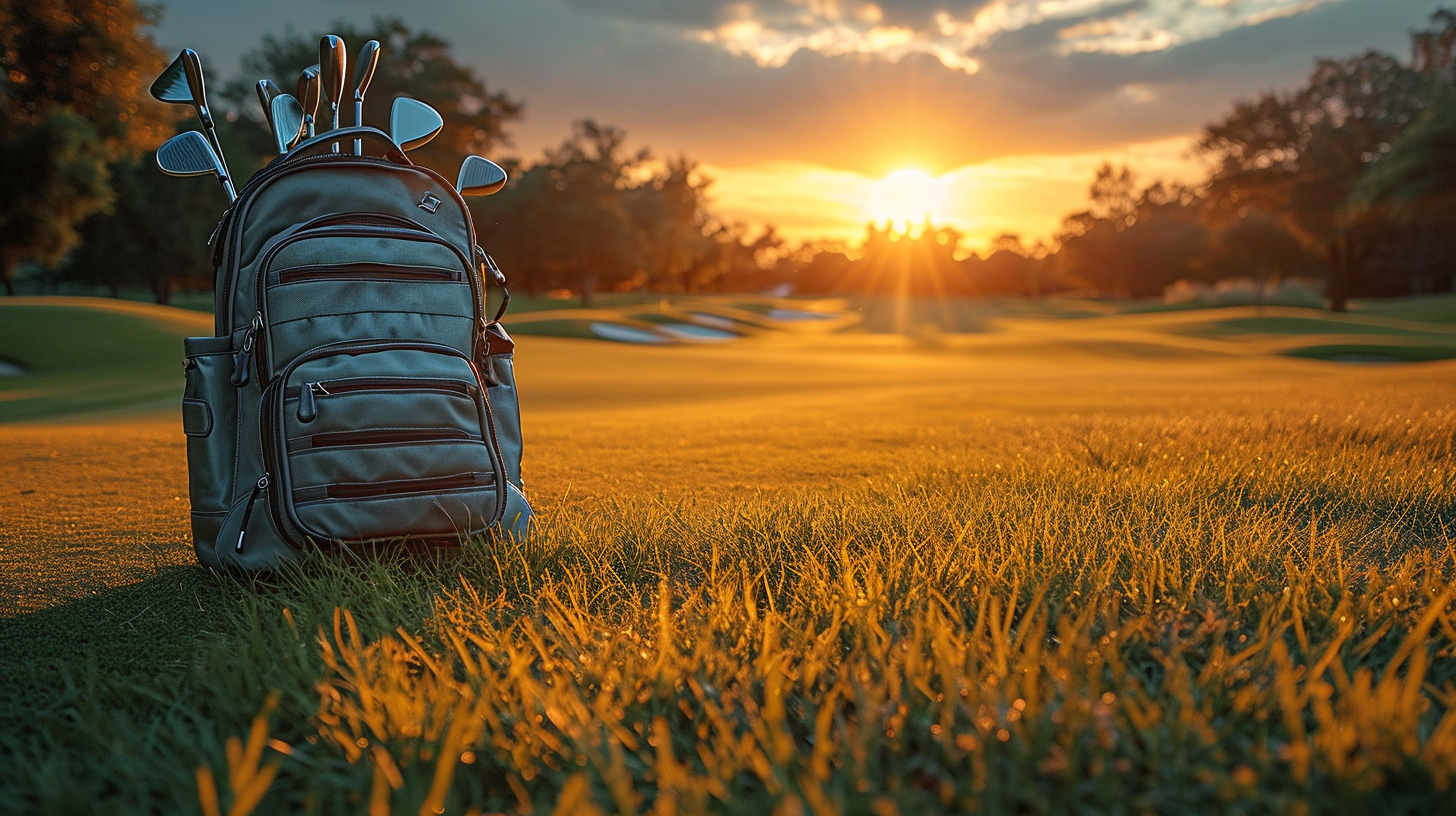Struggling to swiftly grab the right club from your cluttered golf bag? Learning how to effectively organize equipment in a 14 divider layout is the answer.
Arranging your woods, irons, wedges and putter by type, length and frequency of use allows for effortless access to every club.
Attaching must-have accessories and evenly distributing weight keeps items secure yet handy all round long.
Let’s dive into the essential organization guidelines for a streamlined, performance-enhancing 14 divider golf bag.
How To Organize 14 Divider Golf Bag
The key to organizing a 14 divider golf bag is to group clubs by type – woods, irons, wedges and putters.
Then arrange the clubs within those sections from longest to shortest length.
This allows you to easily identify which club is which when reaching into the bag.
Place the most frequently used woods and scoring clubs at the top of the bag for easiest access.
Leave 1-2 dividers open to store accessories like golf balls and tees.
Distribute weight evenly by placing lighter clubs opposite any heavy accessories attached to the exterior of the bag.
Follow these basic organization rules in your 14 divider golf bag and you’ll shave strokes off your game by finding the right club faster.
Group Clubs By Type
When organizing your golf clubs in a 14 divider bag, the first step is to group your clubs according to their type.
This helps keep similar clubs together so you can easily differentiate and grab the one you need.
Start by gathering your woods.
This group will include your driver as well as any fairway woods you carry.
If you also use hybrid clubs, include them in the woods group as well.
Having all your woods together makes it easy to identify the differences in loft.
Your woods will go in the first several dividers at the top of the bag.
Next, collect all of your irons together.
Depending on how many woods you carry, your irons will likely start going into the bag around the fifth divider.
Make sure to arrange them in order starting with your lowest iron (the longest club) all the way up through your wedges (the shortest clubs).
This order will make it easy to pull the right iron without needing to read club numbers.
The last group of clubs is your putter.
Whether you carry more than one putter for practice or different conditions, have all putters in the same divider section.
They can go towards the bottom of the bag to keep them protected.
Arrange Clubs From Longest To Shortest
Once you have your clubs grouped by type – woods, irons, wedges and putters – it’s important to organize them from longest to shortest within those sections.
This helps you quickly identify which club is which when reaching into your bag.
Start with your woods section, arranging your driver (the longest club) towards the top of your bag.
Then organize the rest of your fairway woods and hybrids in order of descending length below it.
This keeps your longest wood at the top, followed by progressively shorter ones.
Do the same with your irons.
Place your 4 iron (the longest iron) at the top of the irons section, followed by 5 iron, 6 iron and so forth all the way down to your pitching wedge and gap wedge (the shortest clubs).
Wedges can go after the pitching wedge again ordered by length if carrying more than one.
For putters, order doesn’t matter as much since length varies little between models.
But keeping the face balanced putter separate from any toe balanced putters will help identify the right one.
Place Most Frequently Used Clubs Nearest The Top
The top of your golf bag with the woods and lowest irons is prime real estate.
This space is easiest to access quickly, so it’s smart to reserve it for your most frequently used clubs during a round.
At the very top after your driver, place the fairway woods and hybrids you hit most often on approach shots.
These clubs get a lot of use, so quick access from the top of the bag is key.
In your irons section, have your shortest irons and wedges at the very top as well.
As you get closer to the green for approach shots, you’ll switch from longer irons to wedges more often.
Keeping them highest in the bag makes grabbing the right one fast and simple.
Don’t forget your putter! Since you use it on every hole, place your putter(s) towards the very top divider sections.
This ensures quick access before and after putting without needing to dig to the bottom of your bag.
Proper organization takes practice, but will speed up your game.
Keep Unused Dividers Open
Even if you have a full 14 club set, it’s wise to leave 1-2 dividers open in your golf bag for additional accessories.
You can use this space to store items you’ll need quick access to during your round.
Tees are essential when heading to the next tee box, so storing them in an open divider makes perfect sense.
Drop a handful of tees into a mesh pouch and place in an open slot near woods or irons you hit off the tee.
Easy access means no more digging around to tee off.
Open dividers are also great for storing extra golf balls.
Keep a sleeve next to your woods section so it’s effortless to grab a new ball after a lost one.
Mark this divider in some way so you instantly know where to reach.
A small first aid pouch, pocket pack of tissues or personal items can also go in open slots.
Customize these spaces to suit items you access frequently to minimize rifling through pockets.
Attach Towel And Accessories To Side Of Bag
Take advantage of gear loops, hooks and attachment points on the exterior of your golf bag.
Clipping on certain items helps keep them handy and also balances weight distribution.
Towels get used on nearly every hole, making easy access vital.
Using a sturdy carabiner, attach towel to a loop securely and clip on when finished.
Don’t forget ball washers too if carrying one.
If your bag has built-in hooks, use them for hanging accessories like ball mark fixers for quick retrieval.
Hooks near bottom can even hold stand bags for upright access without removal.
Some bags feature external rings or hard points for clipping on items like gloves via trigger snap hooks.
Customize attachments to suit your frequent use items and accessibility needs round after round.
Balance Weight Evenly Across Bag
A bag filled with properly organized clubs should distribute weight evenly so one side doesn’t become excessively heavy.
But as you attach accessories, make small adjustments so weight stays balanced.
Start by taking note of which exterior section of your bag carries accessories like towels, gloves and tools.
Then arrange your club divider slots to even out weight opposite lighter sides.
This may mean placing your heaviest driver or irons diagonally across from towel-laden loops.
If one section of dividers has extra weight from stowed balls and tees, balance it out on the other side.
Heavier items stored lower can be offset by lighter woods or hybrids up top.
Gradually tweak organization until standing bag remains upright and carried bag isn’t lopsided.
Monitoring divisons’ contents during round and rehearsing ideal arrangement in your mind ensures you find right club quickly each time.
Regular mental reps help make grabbing and replacing clubs second nature.
With smart planning and frequent equipment checks, smoothly switching from woods to irons to wedges becomes effortless.
And an evenly balanced bag won’t weigh you down as you walk course.
Staying organized round after round also minimizes club tangles and damage while keeping grips cleaner.
Plus you give off professional vibe by accessing needed club in seconds from meticulously arranged bag.
So pay close attention to organization factors like weight distribution, accessibility and frequency of use when arranging clubs.
Putting in work upfront pays off for years with better performance.
Conclusion
Properly organizing your golf clubs in a 14 divider bag takes some initial effort, but pays off every time you hit the course.
Strategically arranging woods, irons, wedges and putters by type, length, and frequency of use makes selecting the right club second nature.
Balancing weight distribution and keeping key accessories handy in open dividers also enhances accessibility.
So take the time upfront to group, order and customize dividers in your bag.
Building smart organization habits shaves strokes off your game.



